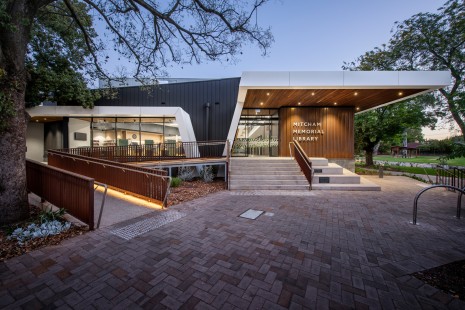
Contemporary Library Design—Where to Now?
The traditional library experience is evolving from a model centred around collections and borrowing to one that prioritises social connection.
Biophilic design creates architecture and urban spaces that are inspired by or imitate the natural environment.
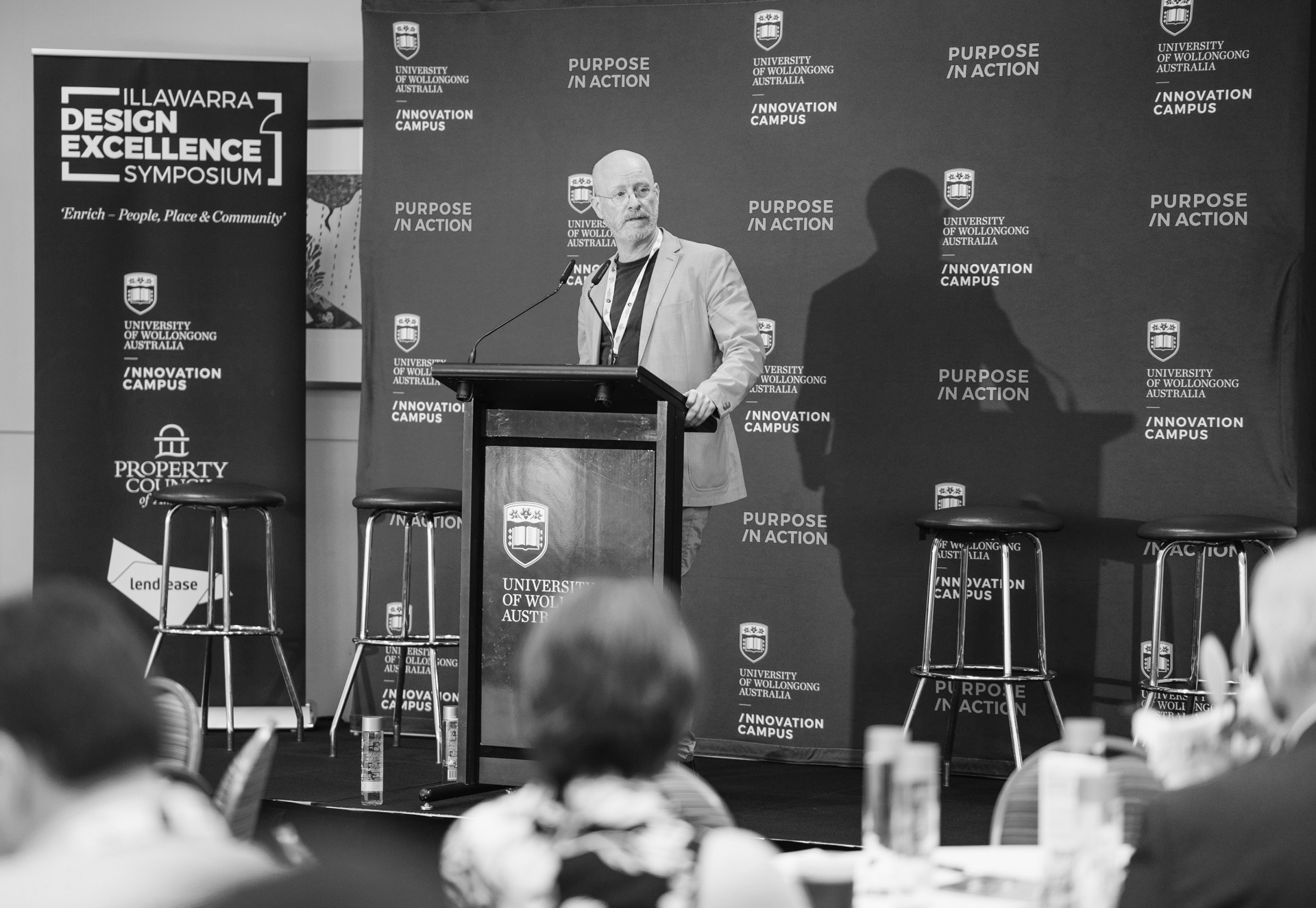
Humans have an innate need to connect with nature, according to the biophilia hypothesis. This connection is vital for health and wellbeing, yet today we spend around 90 per cent of our lives indoors. Recognition of the biophilia hypothesis has seen a shift towards creating architecture and urban spaces that are inspired by or imitate the natural environment, also known as biomimicry.
Richard Does, DesignInc Design Director, presented on this topic at the inaugural Illawarra Design Excellence Symposium, held at the University of Wollongong Innovation Campus and hosted in partnership with the Property Council of Australia. The theme, “Enrich – People, Place & Community,” explored how lives are enriched through buildings, environments and public spaces that are thoughtfully designed to capitalise on community assets, maximise sustainability, embrace technologies and promote health, happiness and wellbeing.
Richard’s presentation, ‘Biophilia and Place,’ discussed how biomimicry can enhance pride of place in community building, and he provided the award-winning Shellharbour Civic Centre and Library as a consummate example.
Architecture and urban design have a responsibility to the place they occupy, as well as to the places that are created. The experience of the built environment can be enriched by borrowing cues from the natural environment that surrounds it.
Richard Does
Director, DesignInc Sydney
Architecture and urban spaces that incorporate principles of biophilic design have more relevance to a place and offer a more positive and meaningful experience for users. Shellharbour Civic Centre, designed by DesignInc and Lacoste + Stevenson, is inspired by its natural surroundings and is a subliminal representation of Shellharbour’s coastal landscape.
The long and low volume sweeping across the site mimicking the contours of the land. Gabion wall cladding at the base of the building is filled with blue metal stones, reflecting the colours and form of the nearby escarpment, and the library and public spaces are enclosed with glass and timber posts to evoke the Illawarra forests. The white soffit accentuates the wave-like form of the roof, referencing the surf, and white cladding on the tower is suggestive of fluid clouds.
The open plaza by Turf Landscape Design provides a place for play and respite with a lawn and water features for people to physically connect with nature.
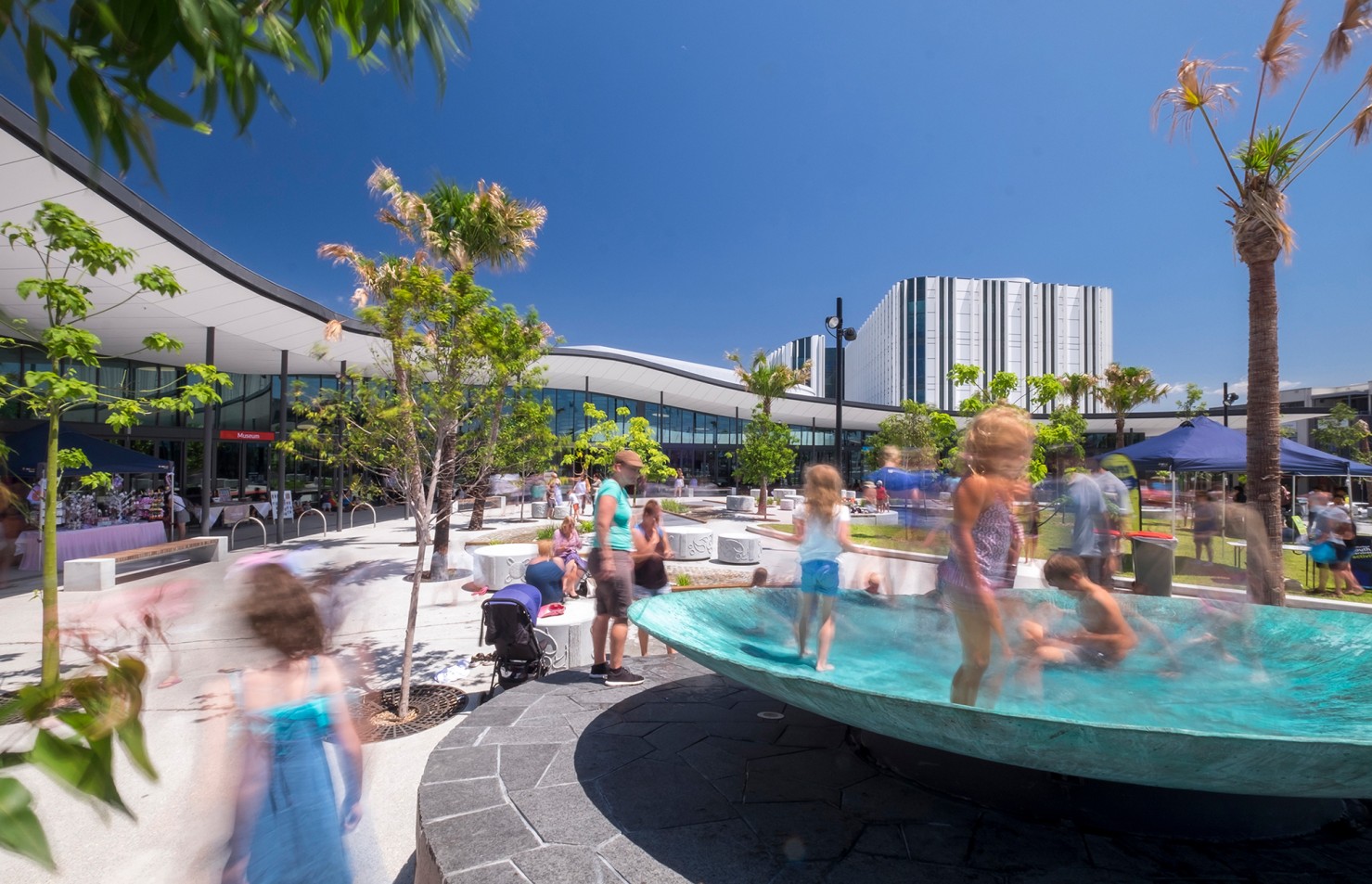
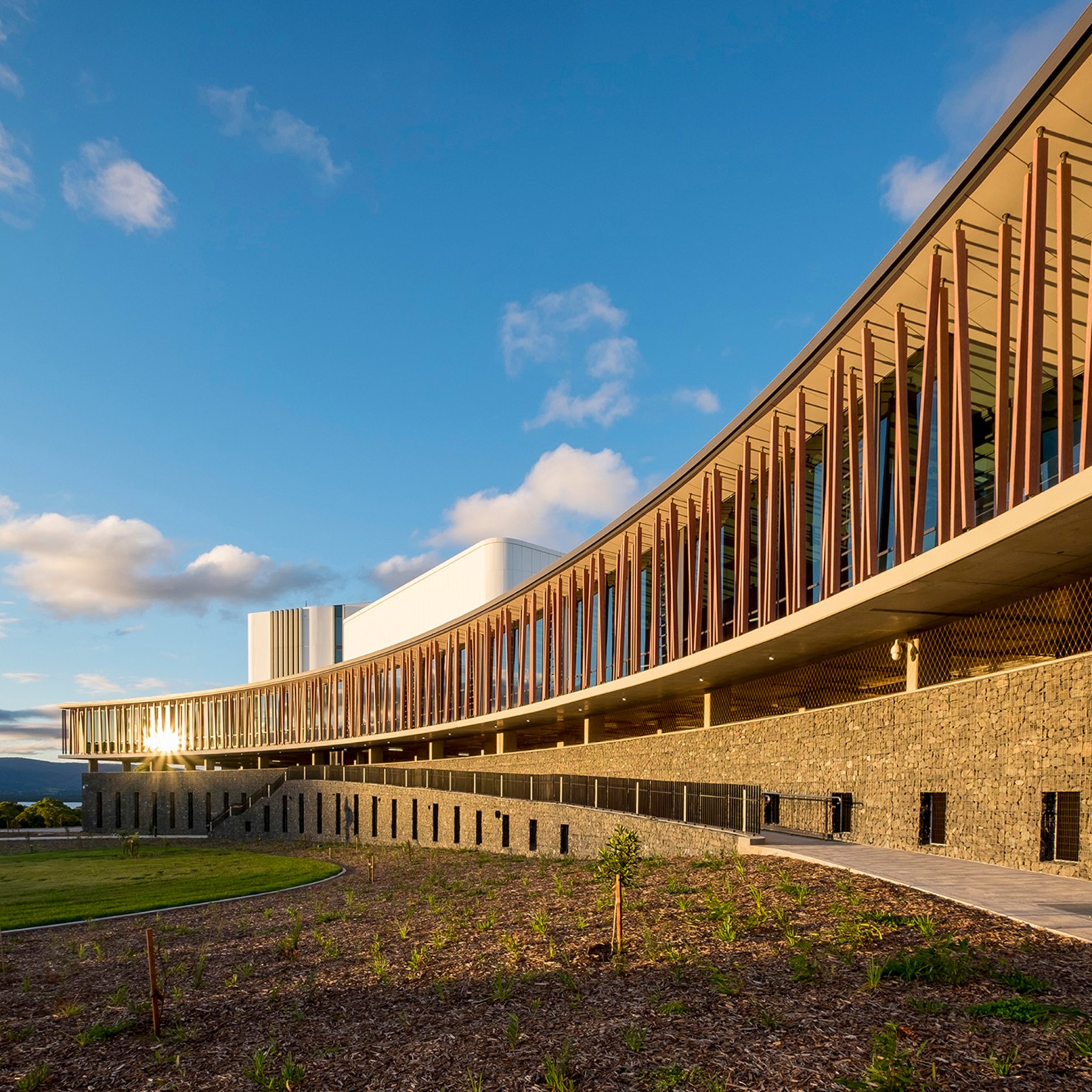
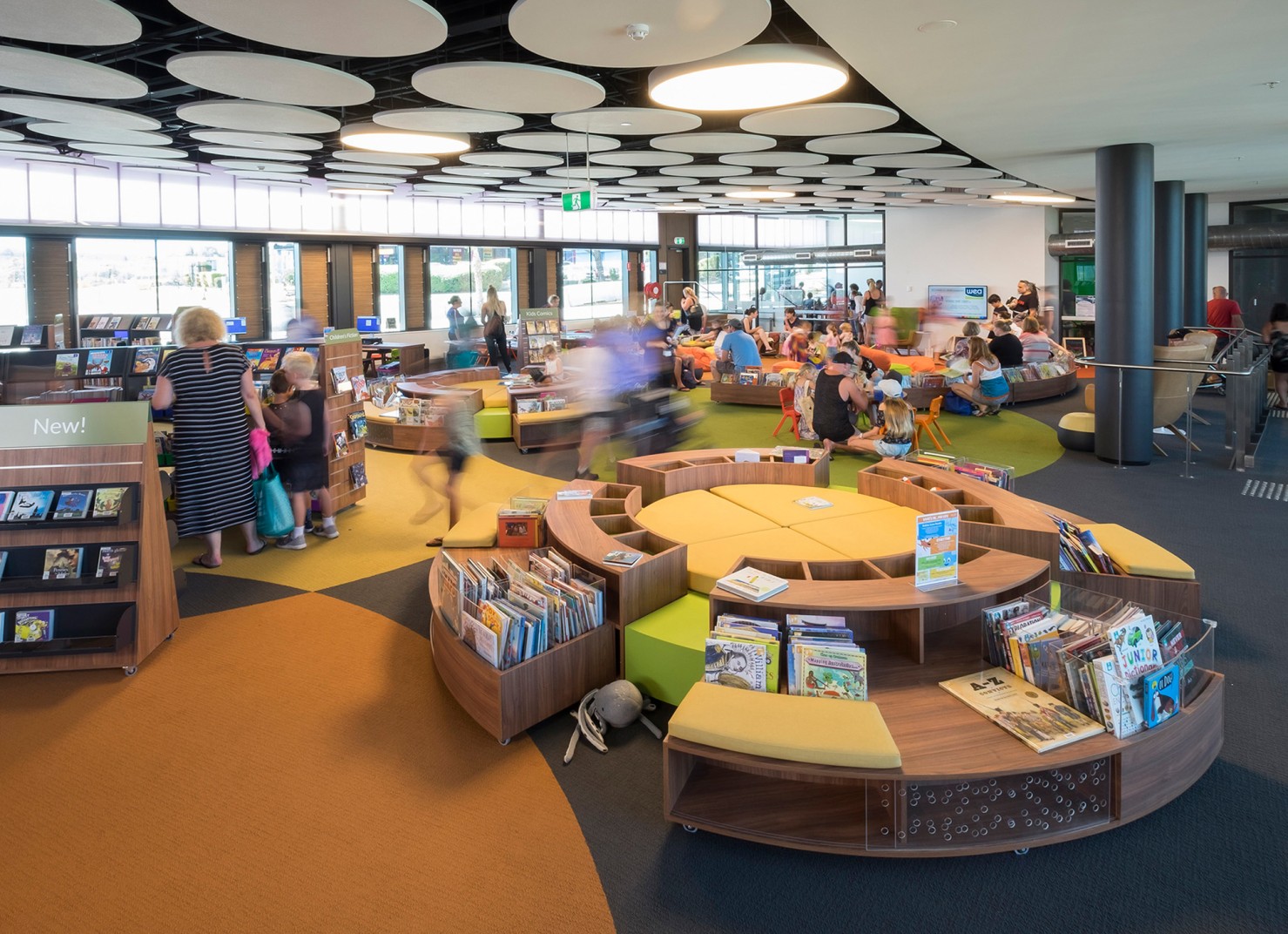
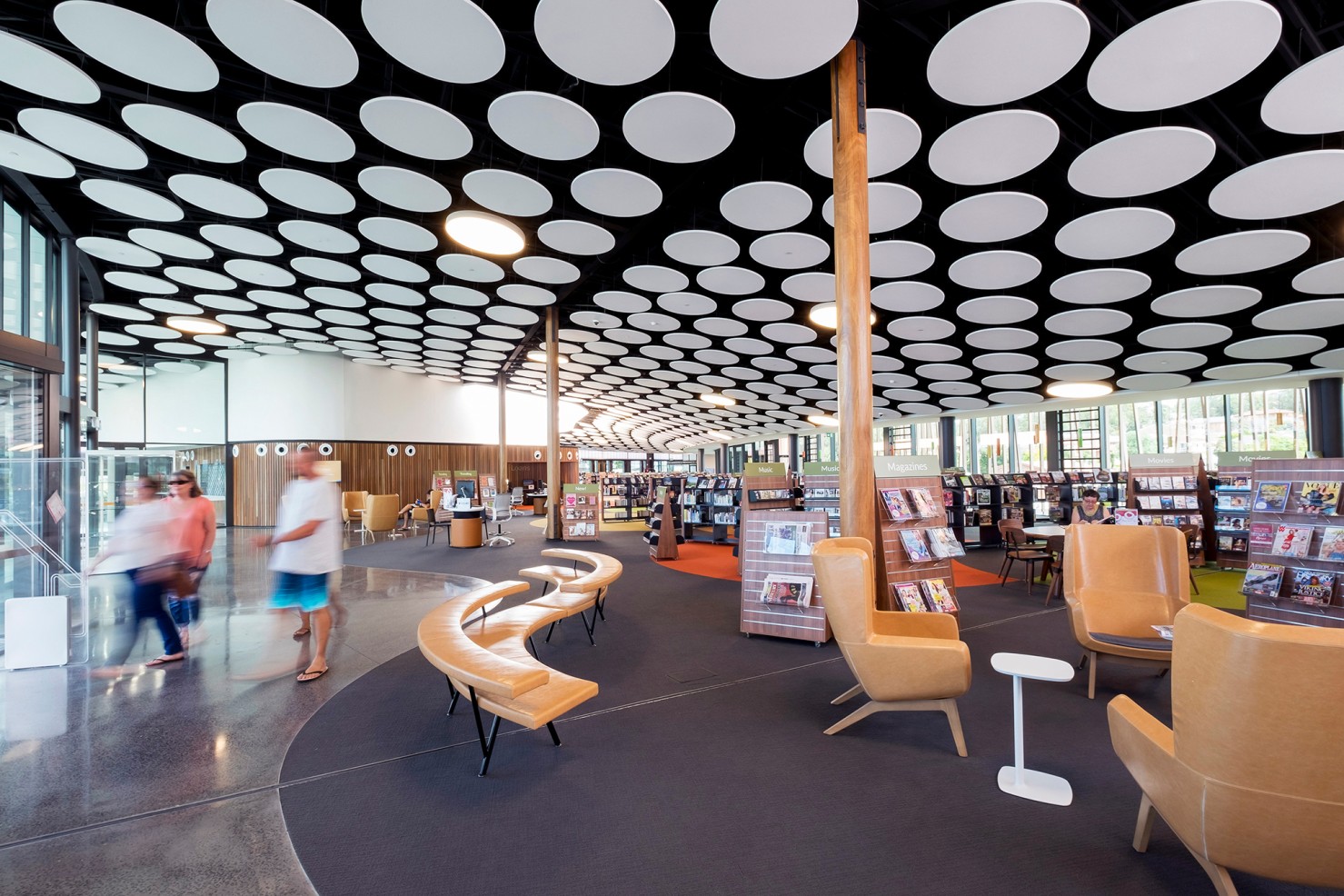
The building evokes wonder and embraces nature through views, natural light and material choices. It is a wonderful architectural expression of the Shellharbour community and landscape.
Richard Does
Director, DesignInc Sydney
The interior material palette also references nature, with neutral and bright colours inspired by moss, lichen, sand and rocks in the natural Illawarra environment. The polished charcoal concrete floor evokes the feeling of walking across the top of the escarpment; the walls are clad in timber to suggest the forest; and white round Sound-Scape discs are suspended from the library ceiling like clouds.
Shellharbour Civic Centre has been embraced by local residents. It has received a number of awards, including a 2020 Good Design Australia Award for Public Space in the Architecture and Urban Design category, the 2020 Australian Institute of Landscape Architecture Award for Civic Landscape, the 2019 NSW Architecture Award for Public Architecture and the 2019 ALIA Australian Library Design Awards in the public library category.